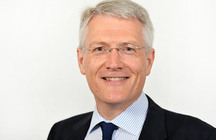Below is the text of the speech made by Andrew Jones, the Parliamentary Under Secretary of State for Transport, at the Lancaster Hotel in London on 21 January 2016.
Introduction
I am really grateful for the chance to speak today.
And thank you to Chargemaster for hosting today’s conference.
It’s great to hear about your work and ideas for the future.
There’s a real buzz around the electric vehicle market nowadays.
And I mean that figuratively, as well as literally.
The shift we are seeing reminds me of the spread of the internet in the 1990s.
The internet started small, as a niche interest, but then it snowballed, and now it’s hard to imagine being without it.
I think we are seeing a similar picture emerging for ultra low emission vehicles in Britain today.
ULEV sales are not just growing rapidly.
They are rocketing.
Plug-in vehicle registrations reached a record high in 2015, as 28,188 new ULEVs arrived on UK roads, more than the past 5 years’ totals rolled into one.
The UK now has the most comprehensive rapid chargepoint network in Europe, and home-grown companies such as Chargemaster are making the UK’s ULEV industry a private sector success story.
Ambition
That’s a success story the government wants to see continue.
And that’s why in the last Spending Review we increased our support for the British ULEV market to £600 million over the next 5 years.
Since 2011, more than 50,000 plug in grant claims have been made, and our new grants will ensure a further 100,000 people will get financial support when purchasing ULEVs.
And we are continuing the highly valued home charge scheme under which home-owners can receive a grant for most of the cost of installing a home chargepoint.
And we are working with local authorities to increase numbers of on-street chargers for owners who don’t have off-street parking.
By 2050, we want virtually every car and van on the road to be zero emission.
Councils in the capital and across the country have similar objectives, and we will shortly announce the winners of a £40 million Go Ultra Low Cities scheme.
The successful local authorities have clear plans for their own city-wide ultra-low emission vehicle revolutions, and will receive funding to achieve those plans.
The rationale for this kind of local funding is clear.
It’s often in the local area that the benefits of ULEV vehicles are most plainly felt — as contributing to cleaner air, healthier lungs and lower noise pollution.
But this transformation won’t be limited to the areas covered by our Go Ultra Low Cities scheme.
ULEVs are an opportunity — and an increasing necessity — for everywhere in the country.
Anyone who was in London yesterday will have seen the pall of smog over the city.
Installing the right ULEV infrastructure in London is challenging.
After our Plugged in Places funding there are more than 1500 chargepoints in London.
But greater progress is possible, and necessary.
So I am pleased that Transport for London have high ambitions for their ULEV delivery plan, which is moving towards implementation.
Challenge
What is so important about the charging network is that growth in ULEVs can only continue if the public’s confidence in their ability to charge is maintained.
The vehicles on display here offer everything a driver could want.
They look fantastic, and drive well.
There are now more than 29 models on sale in the UK — enough to suit all needs, and the choice is increasing all the time.
Some cars be fully charged in as little as 20 minutes — not much more than the time it takes to drop the kids off at school.
So chargepoint technology is improving and reliability is getting better and better.
But drivers need to know that the chargepoint network in their area is comprehensive, expanding, and well-maintained; so that they can drive with confidence to the supermarket, the high street, or the local primary school.
And there’s lots that local authorities can do to improve their chargepoint network.
Such as requiring new building developments to include chargepoints, providing dedicated parking bays for local ULEV car clubs or allowing preferential access for ULEVs in low emissions zones.
And when drivers have invested in a ULEV, they need the right information so they can set out with confidence; to know where their nearest chargepoint is, and that it’s in good working order.
Good information doesn’t help just existing drivers, it also helps newcomers take their first plunge into the ULEV market.
Through measures such as these, local authorities have a strong hand in encouraging the uptake of ULEV vehicles, and I’m really keen to see them play that hand well.
Conclusion
The internet only really snowballed when internet users, providers, website retailers and investors came together in sufficient numbers to create a tipping point
We’re reaching that tipping point with the ULEV market.
But the closer we can work together — across government, manufacturers, chargepoint hosts and network operators.
The quicker we can transform our neighbourhoods.
And deliver the cleaner air and quieter streets we need.
That collaboration is our task in 2016.
And we are making a great start at today’s conference.
Thank you.
